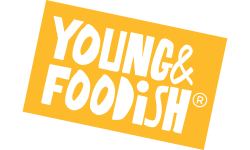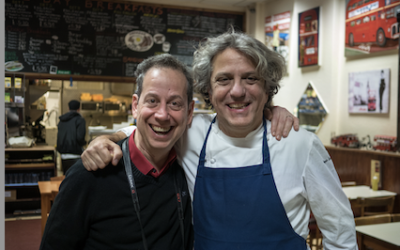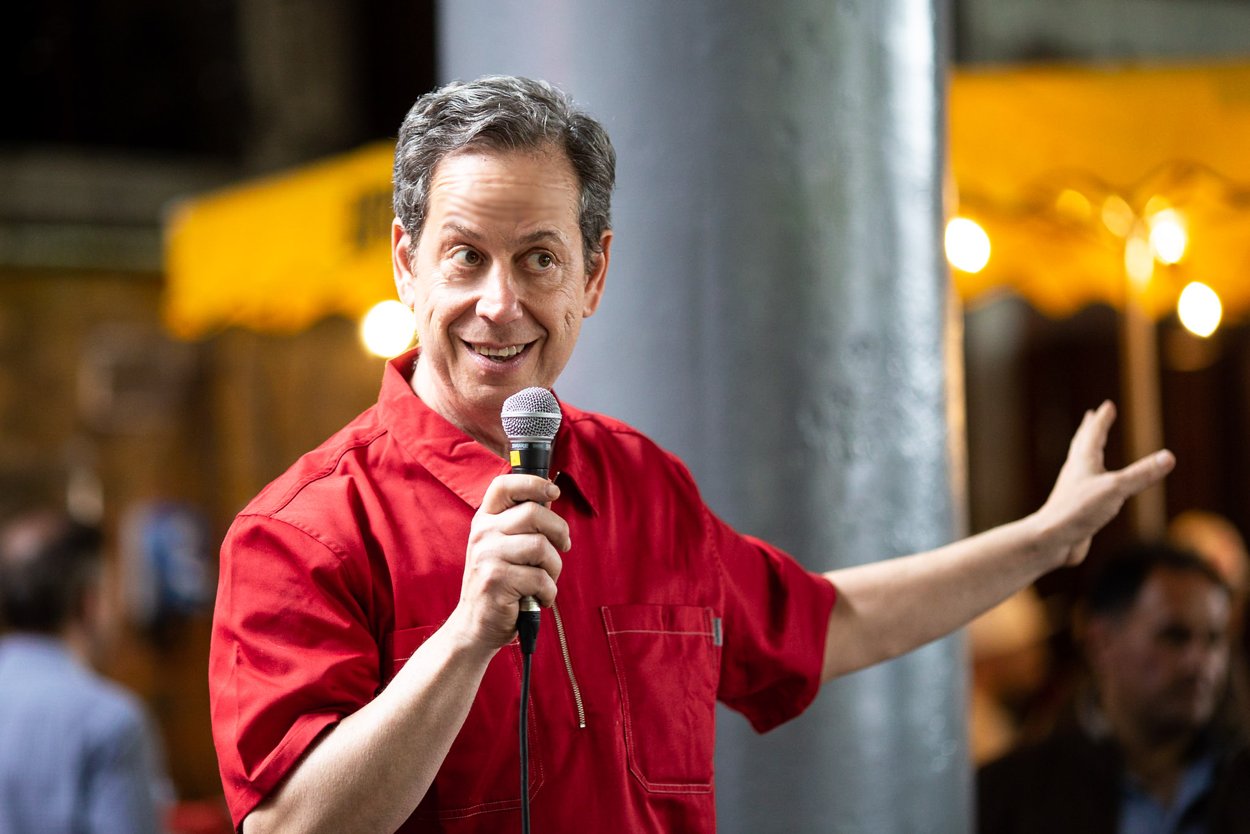 “If you can suspend gravity you can do wonderful things with a burger,” said Nathan Myhrvold, holding up two of the 2,400 pages from Modernist Cuisine, the six-volume cookbook the former chief technology officer of Microsoft both wrote and underwrote.
“If you can suspend gravity you can do wonderful things with a burger,” said Nathan Myhrvold, holding up two of the 2,400 pages from Modernist Cuisine, the six-volume cookbook the former chief technology officer of Microsoft both wrote and underwrote.
The billionaire’s burger was made without foie gras, truffles or pickled gold dust. Its great luxury, like that of this massive project, was Myhrvold’s wherewithal to indulge his curiosity and entertain ours. He liberated the chef/scientists Chris Young and Maxime Bilet, both veterans of Heston Blumenthal‘s Fat Duck, to do what we presume techies do in any lab when there’s no adult supervision: tear things apart and put them back together. How else would you get a burger made with shiitake mushrooms freeze-dried for 48 hours, a restructured Emmental cheese slice and a short-rib patty that is first cooked in an unsealed sous-vide bag, then flash-frozen with liquid nitrogen and finally deep-fried?
I don’t plan to buy Modernist Cuisine: The Art and Science of Cooking and it isn’t only the £395.00/$625.00 list price. I fear that over time I might sag like an Ikea book shelf under the weight of its mass and matter. In particular I am oddly prone to confusion when following recipes in which many components have their own recipes located in another part of another volume, each one requiring equipment I don’t own and ingredients I can’t find. I’m funny that way.

But don’t put me down as an anti-modernist. I am three parts fascinated to only one part unnerved by the new mechanics aligning Myhrvold with kitchen wizards Ferran Adria, Blumenthal, and Grant Achatz. My concern has been that technique can trump creative expression. When I met Myhrvold for tea on Tuesday at London’s new St John Hotel I asked how he and co-authors Young and Bilet reconciled the friction between culinary art and science. The question was irrelevant to someone who views science as serving art, not hindering or displacing it.
“It’s hard to make art if you don’t know what’s going to happen,” Myhrvold responded, reasoning now, as the great American food writer and teacher James Beard famously did decades ago, that the how of a recipe or technique is not of much lasting use to the reader without the why. “Perhaps,” conceded this technical magician eager to reveal his secrets,”we’ve gone a little overboard in explaining the why.”
You’d have to say they’ve gone a little overboard with that burger, too, transforming a test of resourcefulness – how can you make a burger that’s thoroughly juicy pink on the inside yet caramelised crusty but not burnt on the outside? – into one of resources. Whereas a conventional chef working only a grill or flat-top griddle might nevertheless manage to produce a patty that “crumbles in the mouth” – the hallmark, according to Myrhvold, of a succulent burger, he concluded that this challenge dictated multiple means and methods. In a cookery book illustrated with sawed-in-half cooking machines and vessels the logic can seem inverted: Why simplify something when you can make it complicated?
There is one gadget recommended by Myhrvold that is both inexpensive and indispensable: the digital meat thermometer. It may not nullify gravity, but using one will help you turn out a burger that either looks or, if you prefer darker shades of doneness, doesn’t look like the one pictured below. This particular burger, served last week at Hix in London’s Soho, had great meat that passed Myhrvold’s crumble test but was diminished by a cracked, squished bun and streaky bacon I couldn’t manage to cut with my teeth. If only I’d ignored the art vs science nonsense when I had the opportunity to question Myhrvold and instead got down with the billionaire to buns and bacon.



Maybe it is the colour of the photo, but that burger is RAW in the middle, not PINK. Now I am no scientist, but I do make some of the best burgers around. It is far easier to cook any piece of meat on the outside & leave it RAW on the inside than it is to do the same & Cook it to PINK on the inside. Science & Art do cross over, but the former should be the servant of the latter if we are not to aspire to eating the product of a laboratory rather than that of a kitchen.